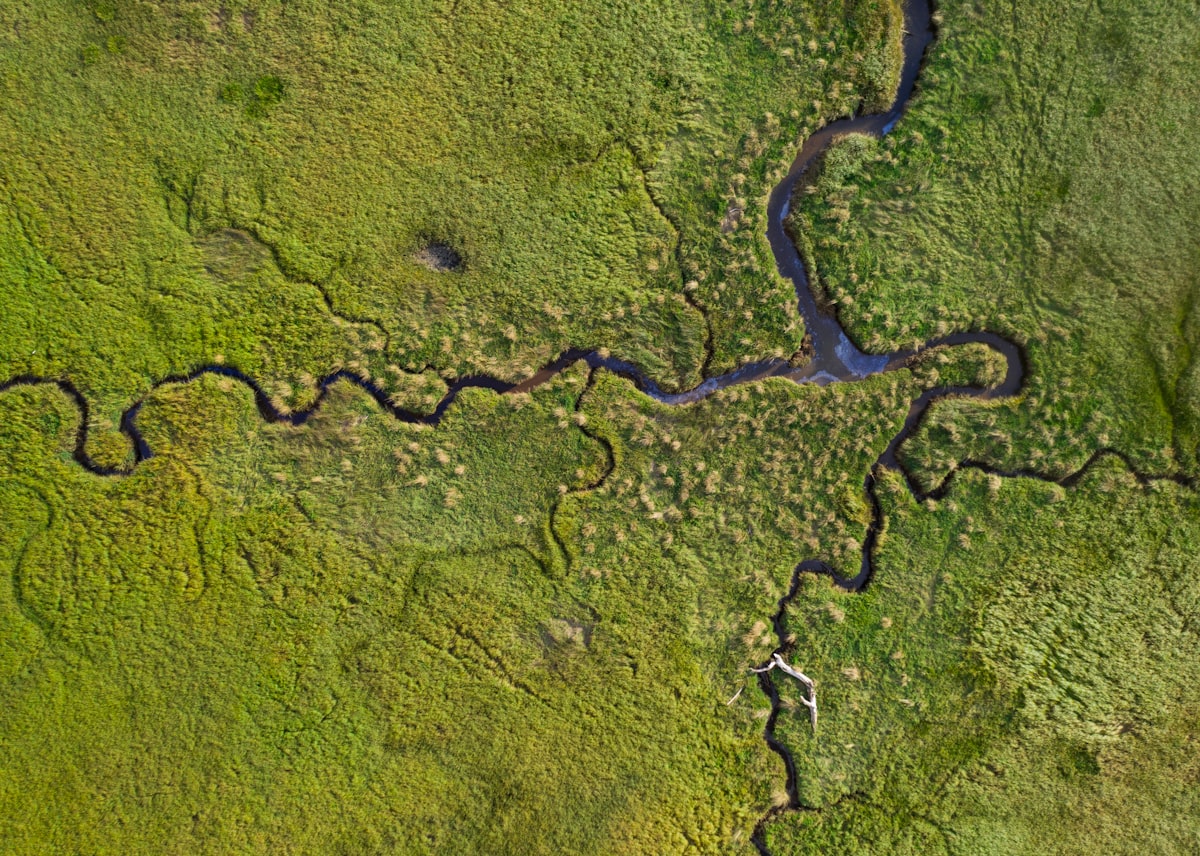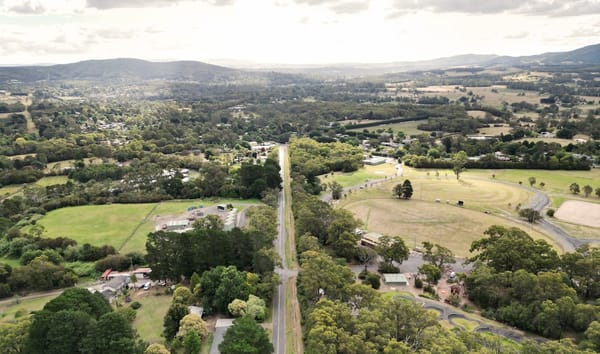The 'so what' of complexity - Part II
In this fieldnote, I'm going to dive into the guiding principles for my complexity practice - including a focus on Portfolio Approaches, Learning and Funding.

What and how will we do differently when we embrace complexity, rather than try to fight against it?
This was the provocation in Part I : The 'so what' of complexity, which I shared in August. That post seemed to hit a nerve with some people, so this is the next part in the series of insights garnered from over a decade of focus on developing strategies and experiments to influence change towards regenerative environmental and social futures.
In Part I the focus was on the character of the way we work with, indeed embrace, complexity. It touched on 'adaptative doing', roles and capabilities, and some examples of organisations doing a great job of sharing their practice*.
In this fieldnote, I'm going to dive into the guiding principles for my complexity practice - the common patterns of how I approach most challenges, and the backstory of why they're important for increasingly the likelihood of success.

1) Taking a Portfolio Approach
As we know, tackling complex challenges can feel a little like a game of whac-a-mole, as the challenge we're facing shifts and changes over time, and the same intervention will not always generate the same results [1].
If you're attempting to tackle health issues in your community through a dietary-based intervention by providing training for people to grow their own veges at home - you may see an initial uptake and change in people's health outcomes.
However try this in a different context - such as a more dense urban location, and you may see different outcomes. Likewise, over time the original group may struggle to keep up the vege growing due to other factors (e.g. a new baby), and the outcomes would change again.
What is a Portfolio Approach?
To work with this emergence, developing a portfolio of coordinated actions can help to spread risk and increase the potential for learning - key ingredients to adaptive doing. These 'coordinated actions' are also sometimes known as prototypes, probes, and trojan mice. Their commonality is that they often explore different aspects of the challenge, operate at different levels of a system, or have different levels of risk associated with them.
This approach is also useful when it is unclear how a system will respond to an intervention.
Example: Portfolio Approach
A portfolio approach to the challenge might be something like:
- giving people a raised garden bed kit and some seeds
- access to online resources about edible gardening and nutrition
- setting up a co-op food purchasing group to bring down the cost of nurtitious supplies
- establishing a peer-to-peer model of cooking classes, which celebrates people's different cultures through food
Designing the portfolio is built on what you want to learn about both the challenge, and the hypotheses about the form, function and outcomes of the different possible interventions.
In this situation, creating these interventions doesn't guarantee health outcomes, but it does create an opportunity to investigate what happens next. More about that in a second.
Why coordinated actions?
If we understand influencing change as a multi-dimensional challenge, we know we can make interventions at a range of scales, intensity and at different phases of a challenge. For example, Meadows gives us a hierarchy of leverage points [2], Geels shares regimes and niches for transition [3] and Brand's Pace Layering [4] helps us think about different change at time scales.
Deep dive:
- Deep Demonstrations from Climate-KIC & Partners - showing how to create and fund a range of activities on different topics
- Accelerator Labs Network from UNDP is seeking to create a broad portfolio approach for Development
- Portfolio change for environmental and social outcomes from my Masters for targeted systems change

2) Learn continuously
If we absorb the lessons of complexity, we understand that even the same action done on a different day, can mean different results.
This is a problem for the 'set and forget' approaches to change, exemplified by the likes of Governments and Nonprofits who gain funding for programs and services, and then structure them to run without alteration for years ahead.
What we need to address complex challenges are portfolios of activity which learn and adapt to the changing circumstances. The faster the rate of change, the faster they need to learn and adapt, to still be effective over time.
This kind of constant 'checking and course correction' implies we need continuous evaluation of outcomes and impacts - the mandate to question everything, and use the learnings to change the form of the work.
Example: Learn continuously
If we go back to our original example of a dietary program to address health issues, underpinning the portfolio of activities needs to be a continuous research and participatory evaluation. This would be used to capture insights and learning, and support the community, funder and program owner to adapt and change elements over time.
Deep dive:
- RE-AMP Network which seeks to tackle climate change in USA
- Orange Compass scoping paper on building a culture of learning at scale [pdf]

3) Fund differently
One of the biggest barriers to the approaches above, is how projects and initiatives are funded.
For the most part, social and environmental initiatives are funded through grants, or service contracts. These are often purposefully restrictive - defining what activities should be delivered, what can and can't be included in the funding, and expected outcomes. This serves to constrain adaptation based on learning, and causes huge amounts of waste and inefficiency across the 'for purpose' sector.
The alternative (complexity-informed) approach to funding needs to explicitly enable portfolio-based approaches, with adequate mechanisms to adapt the terms of the agreement when evidence points to the need to evolve the activities for better outcomes.
Some work is happening in this space, where philanthropists are acknowledging the need to shift the culture and power of grantmaking, as evidenced by calls for the likes of 'trust-based philanthropy' [5] and trends around mission-oriented innovation and policy.
Funding collectives, communities and organisations for multiple years at a time also enables them to build teams, retain talent, and building up more nuanced understanding of the challenge and solutions, and hone impact over time.
Likewise recognising some of the enabling factors to portfolio approaches and continuous learning will require investments in different kinds of infrastructures, capabilities and capacity. This will require a shift in traditional funding agreements which may explicitly fund relational work, as well as systems level sensemaking and integration efforts which may sit outside of singular organisations. Provision for these kinds of efforts will require apetite for experimentation and new forms of practice as many of these infrastructures are in their infancy.
Example: Fund differently
Reverting to our example, the implications of this funding approach could be delivered in different models, such as:
- Convene people and organisations who are focused on the challenges of health, and invite a portfolio of coordinated activities to be developed and funded (this has been used in the Collective Impact space, Social Labs and others).
- Invite collectives and organisations to develop their own portfolios of activities which seek to make up a targeted approach, and fund these.
Recognising that as evidence becomes available, the portfolios should evolve is vital to the way that funding agreements could work, with support to explore plural types of value created, build shared insight across various stakeholders, and openly publish insights.
Funding would be 3 years guaranteed with the intention to research and evolve the activities over time, and an additional 3 year funding possibility with the delivery of agreed level of impact for health of the focus communities.
Deep Dive:
- Funding projects to funding portfolios - UNDP Innovation
- Financing Sustainability Transitions - Dark Matter Labs
- Building Better Systems - A Green Paper on System Innovation by Charles Leadbeater & Jennie Winhall
- Dark Matter of Funding Part 1 & Part 2 with Cassie Robinson, Indy Johar & co.

Conclusion
The implications of complexity are both broad and deep for how we alter the ways we attempt to bring about preferable futures. The need for scaling up these new forms of practice is growing every year as interconnected challenges continue to grow in severity and urgency.
The need for bold, rigorous experiments is growing, and the need for partners who have an apetite to make them happen is growing with it.
Looking for Part III in this series? Head here.
Looking for Part I in this series? Head here.
* Since publishing Part I, one of the organisations I highlighted published an excellent series on how they organise and work as a platform for tackling multiple complex challenges at once, called #BeyondTheRules - check it out on their Medium channel, starting here.
References
[1] Colchester, J., 2021. Tackling Wicked Problems with Complexity Theory. Access at: https://www.sitra.fi/en/blogs/tackling-wicked-problems-with-complexity-theory
[2] Meadows, D., 1999. Leverage Points: Places to Intervene in a System. Academy For Systems Change, [online] Available at: https://donellameadows.org/archives/leverage-points-places-to-intervene-in-a-system/
[3] Geels, Frank. (2002). Technological transitions as evolutionary reconfiguration processes: A multi-level perspective and a case-study. Research Policy. 31. 1257-1274. 10.1016/S0048-7333(02)00062-8.
[4] Brand, S., 2008. Clock Of The Long Now. New York: Basic Books.
[5] McGrath, A., & Wong, N. (2020). Building a Trust-Based Philanthropy to Shift Power Back to Communities. Stanford Social Innovation Review. https://doi.org/10.48558/N1FH-HE80





